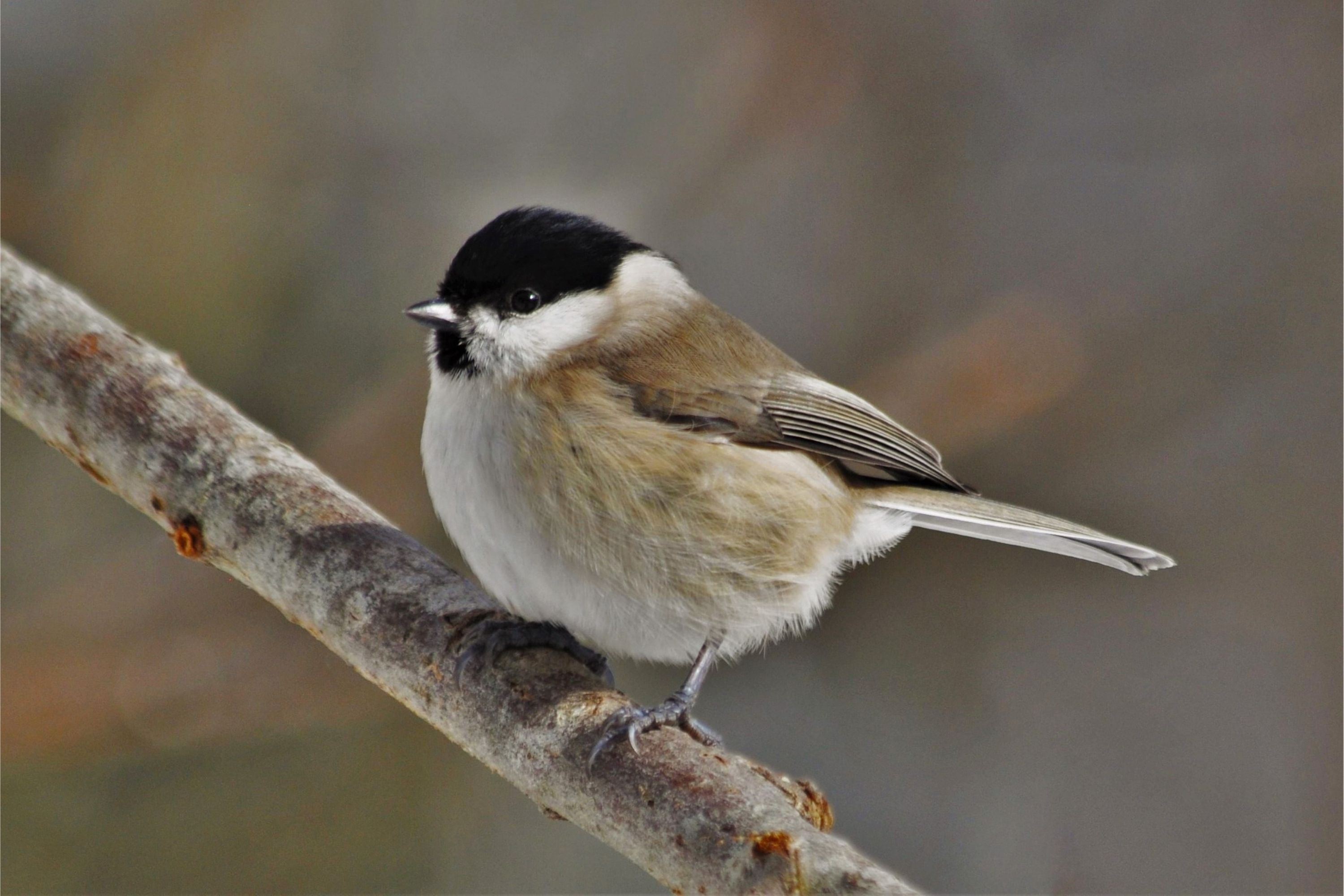Mountain chickadee
(Poecile gambeli)

Description
Poecile gambeli, commonly known as the mountain chickadee, is a small passerine bird that belongs to the family Paridae. The species is native to the western United States and southwestern Canada, and is typically found in high-elevation forests and woodlands. Physical Description: The mountain chickadee (Poecile gambeli) is a small bird, measuring approximately 4.5 to 5 inches in length and weighing between 0.3 and 0.4 ounces. It has a distinctive black cap and bib, white cheeks, and grayish-brown upperparts. Its wings and tail are a darker grayish-brown, and its underparts are a lighter grayish-brown. The bird's bill is short and black, and its legs and feet are grayish-brown. Behavior: The mountain chickadee (Poecile gambeli) is a highly active and social bird. It is often seen flitting from tree to tree and engaging in acrobatic foraging behaviors. It is typically found in small flocks, often joining mixed-species flocks with other small songbirds. During the breeding season, the bird forms monogamous pairs and defends a breeding territory. It is a non-migratory bird, and its range is largely determined by the availability of suitable habitat. Habitat: The mountain chickadee (Poecile gambeli) is found in a variety of forest and woodland types, including mixed conifer forests, pine forests, and aspen groves. It is also known to occur in shrublands and chaparral habitats. The bird is typically found in high-elevation forests and woodlands in the western United States and southwestern Canada. Its range is largely determined by the availability of suitable habitat. Diet The mountain chickadee (Poecile gambeli) is primarily insectivorous, feeding on a variety of insects, spiders, and other small invertebrates. It also feeds on seeds and fruits, particularly in the fall and winter when insect prey is scarce. The bird is known to cache food in the fall and winter, storing it in crevices and other hiding places to be retrieved later. Breeding and Reproduction The mountain chickadee typically breeds between late April and early July, depending on local conditions. The bird forms monogamous pairs, and both the male and female take part in nest-building and incubation. The nest is typically located in a natural cavity, such as a hole in a tree or a crevice in a rock face. The nest is constructed of a variety of materials, including grasses, mosses, bark, and feathers. The female mountain chickadee lays between 5 and 9 eggs, which are incubated for approximately 12 to 14 days. Both parents take turns incubating the eggs and feeding the young after they hatch. The chicks fledge from the nest after approximately 18 to 21 days and are independent after several weeks. Conservation Status The conservation status of the mountain chickadee (Poecile gambeli) is considered to be of "Least Concern" according to the International Union for Conservation of Nature (IUCN) Red List. This is because the species has a wide range and its population is considered stable. However, the bird may be vulnerable to habitat loss and fragmentation due to logging, development, and other human activities. Conservation efforts to protect and restore suitable habitat may benefit the species and ensure its long-term survival. Conclusion The mountain chickadee is a small, active bird that is found in high-elevation forests and woodlands in the western United States and southwestern Canada. The bird is known for its distinctive black cap and bib and social behavior, often found in small flocks with other songbirds. While the mountain chickadee is currently considered a species of least concern, its habitat is threatened by human activities and climate change, emphasizing the importance of conservation efforts to ensure the continued survival of this unique species.
Taxonomic tree:







